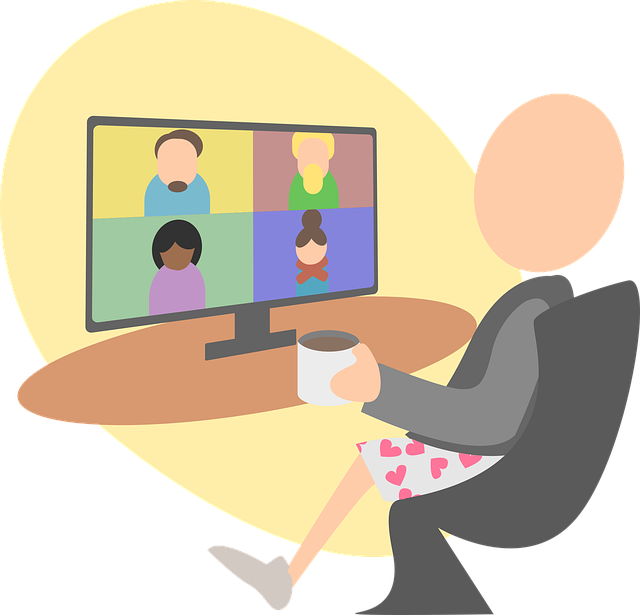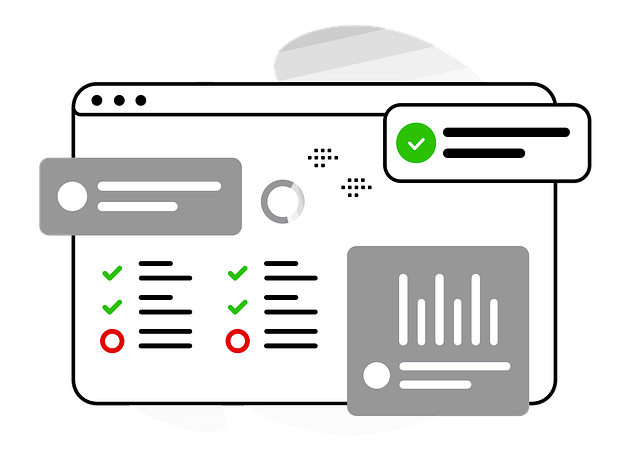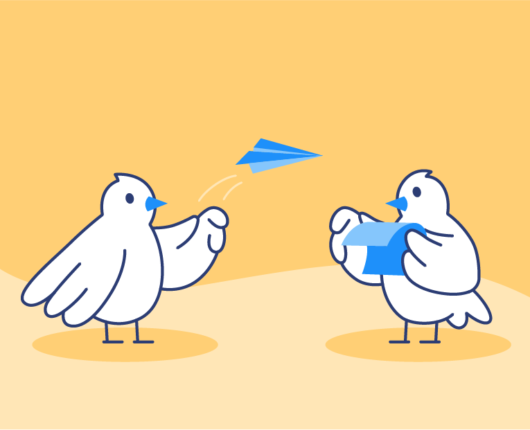As someone who specializes in appointment scheduling software, I can’t help but notice how many companies are still using clumsy methods to book their meetings.
It’s easier than ever to streamline the process. People simply pick a time and fill out your intake form. Best of all, scheduling apps, like Appointlet, are designed to send appointment confirmation emails and reminders. Appointment confirmation text messages can also be a helpful tool for reducing no-shows and ensuring clients confirm their scheduled appointments.
Sending confirmation messages for client appointments not only helps reduce no-shows but also makes your clients feel valued, as they know that you care about their time and want the meeting to happen exactly as planned. It’s important to include all the information—such as date, time, and location—in your confirmation messages so clients have complete details about their appointments.
Read on to find out how you can make your appointment confirmations more effective with brilliantly crafted emails and text messages.
Why is an appointment confirmation so important?

Sending an appointment confirmation is important for a number of reasons. Each meeting you schedule has a certain monetary value attached to it, making it crucial to reduce no-shows. Whether that’s in terms of the time you spend with them or the revenue they are expected to drive for your business.
When you set aside time for a meeting, it’s assumed that the person will show up. When they don’t, you incur an opportunity cost for this wasted time. Tracking appointment status allows you to optimize scheduling and further reduce no-shows by identifying which appointments are confirmed and which need follow-up.
Confirmation messages help to guard you against financial losses associated with no-shows. Your clients are able to double-check meeting details and make sure the info is correct. They also get a reminder of the scheduled meeting and can add it to their email calendar, so they get a notification as the meeting approaches. Implementing confirmation processes leads to reduced no-shows and improved appointment management.
The cost might not be substantial for one or two missed meetings, but if you stop sending confirmations altogether, the number of no-shows can skyrocket, and the associated cost will also rise accordingly.
Here are a few other ways appointment confirmations can help.
A shared receipt of the agreed time and location
Your confirmation messages summarize details like the agreed location and the date and time of an appointment. Any special meeting instructions can also be included. You may need them to prepare something in advance or want to guide them toward a specific room within your company’s building or office.
You’ll also have the option to include contact details, such as the office location and office contact information, in case the attendee needs to get in touch. This could be the phone number or email of a receptionist or the meeting host themselves.
One of the biggest perks will be for virtual meetings, where the physical location is replaced by a link to your conference room. Instead of using a static link (which leads to problems like Zoom Bombing), the clients will get a unique meeting URL that applies to their appointment only. They can join the meeting with a single click, making it super easy for them to attend.
Setting up automated reminder emails and text messages
Automated appointment reminders are easy to send and downright powerful once you have a working system. Even service based industries like auto repair businesses are now relying on AI-powered customer communication tools like AutoLeap AIR to automate confirmations and updates for customers to ensure every interaction feels prompt and professional. Sending them manually is a hassle, and a lot of secretaries don’t even bother. They expect the attendee to take the initiative, which ultimately comes at a cost to the company.
Scheduling software is designed to check the meeting host’s availability and then present the appropriate options for people to choose from. As long as your host’s email calendar is well maintained, there is very little room for human error.
In the event that your attendee enters in the wrong information, apps like Appointlet will let you go in and edit their intake form responses after the fact. Then, you can use your email or text subscription service to send messages and remind customers about their appointments. It is important to send reminders to reduce no shows and minimize revenue loss, as missed appointments can significantly impact your business.
8 ways to improve meeting attendance

Let’s look at a few more ways appointment confirmations could be helpful in improving meeting attendance.
Last-minute cancellations: Sending email and/or SMS confirmations with appropriate details lets your clients make any changes they want timely and avoid last-minute cancellations.
Appointment confirmation emails: Most people are in the habit of checking their emails regularly. Sending out confirmation messages at their preferred email addresses is always a great idea.
Appointment confirmation texts (SMS): SMS messages are an excellent way to augment your existing email notifications. Sending appointment confirmation texts to phones can also improve customer service, reduce no shows, and streamline business operations by keeping the details in front of them.
Writing a clear subject line: The subject line of a message can be the deciding factor in whether someone open an email or not. Make sure your subject lines are clear and concise to improve your open rates.
Important details about the meeting: Sometimes appointment booking forms can be long. The confirmation email typically includes their form responses so they can double-check that everything is correct.
Upfront cancellation policy: Appointment confirmation messages should also have a clear and upfront cancellation policy. This ensures that the clients know how to cancel the appointment in advance.
Policy for no-shows: If you have a refund policy for no-shows, putting this in your confirmation email can prevent arguments later on.
Including a cell phone number for support: It’s not a bad idea to include a phone number in the confirmation messages, so attendees can get in touch with any queries they might have.
Types of appointment confirmations
Appointment confirmations come in several forms, each suited to different business needs and client preferences. Understanding the various types of appointment confirmations can help you choose the best method for your scheduling process and ensure both you and your clients are always on the same page.
Verbal confirmation: This traditional approach involves confirming appointments over the phone or in person. It’s a personal touch that can be effective for high-value client meetings or when a direct conversation is needed. However, it can be time-consuming and may not provide a written record of the appointment details.
Written confirmation: Sending a confirmation via email, text message, or even a formal letter provides a clear, documented record of the appointment. Written appointment confirmations are easy for clients to reference and can include all the necessary details such as date, time, location, and contact information.
Automated confirmation: Many businesses now rely on appointment scheduling software to send automated confirmation messages. This method streamlines the confirmation process, reduces manual work, and ensures every appointment is acknowledged promptly. Automated confirmations can be sent as emails or text messages, making them convenient for both the business and the client.
Double confirmation: For important appointments or industries where attendance is critical, a double confirmation process can be used. This involves confirming the appointment at the time of booking and then sending a follow-up confirmation closer to the appointment date. Double confirmation helps reduce no-shows and ensures the recipient is reminded of their upcoming appointment.
Each type of appointment confirmation has its own strengths. The best choice depends on your business model, the nature of your appointments, and your clients’ preferences. By selecting the right confirmation method, you can enhance your scheduling process and provide a smooth experience for everyone involved.
Best Practices for Appointment Confirmation Emails & Messages

Appointment confirmation messages are most effective when they’re short and precise. They only need to include the most relevant information. Identifying your company at the top of your email is common practice.
It goes without saying that you should include the appointment date, time, and location. Crafting an effective appointment confirmation text means including these key details while maintaining a friendly and professional tone to ensure clarity and prompt a response from the recipient.
The rest of the content is up to you. Providing examples of appointment confirmation messages can help illustrate best practices and different formats for clear, professional communication.
Here are a few best practices you can follow for writing some good confirmation messages.
Accommodating last-minute cancellations
Sending confirmation messages with proper rescheduling or cancelling instructions helps to minimize last-minute cancellations. But if your policy was clearly outlined and someone still attempts to cancel at the last minute, you should collect details on why they didn’t contact you sooner.
Maybe they forgot about the meeting altogether, or something more important came up. By asking the right questions, you will be able to understand if the appointment cancellation was their fault, or if something on your end can be improved. Either way, you will be able to get to the root of it and it could be avoided for future appointments.
Appointment confirmation emails
Sending confirmation emails the old-fashioned way with automation software works. But you can leverage this moment in the customer lifecycle strategically to get better results. You don’t need any fancy designs or complicated solutions. The key is to keep your message short and simple.
Using email as a reliable channel for appointment confirmation and follow-up ensures that schedules are clearly communicated and verified. Additionally, clients can submit appointment requests or rescheduling requests via email, making it easier to manage and modify appointments efficiently.
You can also enhance trust and deliverability by using a quick and easy DKIM record checker to validate your DKIM configuration, ensuring your confirmation emails reliably land in inboxes rather than spam
Appointment confirmation texts (SMS)
Average SMS open rates are close to 98%, almost three times more than email. This lets us know that appointment confirmation text messages are even more effective than emails for enhancing communication and reducing no-shows. Using SMS for email verification can greatly improve response rates and user trust.
Unlike an email, the volume of text you can share in SMS messages is limited. Make sure that you include only the most important information. Sharing the appointment title, date, time and location should be enough. Personalize the message by including the recipient’s name or details to make the confirmation more effective. Some companies ask attendees to confirm that they received the message by replying directly.
You could argue that text message reminders are even more important than the confirmation. An SMS reminder message will ensure that they keep the meeting in mind as it approaches.
Writing a clear subject line
Unlike marketing emails, the subject line of your appointment confirmation doesn’t need to be flashy. Something like “Meeting confirmed: Product Demo with Jane Doe” will help them identify who they’re meeting with and what it’s about. Later, if they need to check their appointment details, this format makes it easy to scan and locate the confirmation.
Including important details about the meeting
Don’t forget to include important details about the meeting in your confirmation messages. This helps both parties prepare for the meeting so that when they finally meet, they can talk business without wasting each other’s time.
Additionally, utilizing a customer service tool for these confirmations ensures that clients can conveniently double-check their appointment booking and connect with the right people, enhancing the overall meeting experience. Including this information is also important so that the clients can double-check that they booked the right meeting with the right people.
Upfront cancellation policy
Creating and communicating a clear cancellation policy allows your clients to back out if they need to. With an automated scheduling tool, you can define the minimum notice required for cancelling. If the meeting has a certain attendance fee, you may impose a penalty for late cancellations just to discourage this practice. Also, make it very clear in the confirmation email how you would like them to cancel; it could be through a text message, email, phone call, or an automated link.
Policy for no-shows
Guarding against no-shows can lead to a significant increase in revenue. Consider adding a terms and conditions document to your scheduling flow. They can check the box to confirm they’ve read and approved the terms. This may include a penalty if the meeting is abandoned. That being said, if the client reaches out and can’t show up due to severe circumstances, consider making a one time exception to your rule.
Including a phone number for support
5 pointers for integrating appointment confirmations into your workflow
Some customers sign up for a meeting but have additional questions that they want answered before the meeting takes place. For this reason, it’s not a bad idea to include a contact number for your company representative. If adding a phone number isn’t possible, you could include a reply-to email address instead.

Seamlessly integrating appointment confirmation into your workflow is a game-changer for businesses looking to save time, reduce no-shows, and keep their schedules running smoothly. Here’s how you can make appointment confirmations an effortless part of your daily operations:
Choose the right appointment scheduling software: Start by selecting a tool that supports automated appointment confirmations, reminders, and follow-ups. This ensures that every appointment is acknowledged and clients receive timely notifications without manual effort. (Get started with Appointlet for free today!)
Establish a clear confirmation process: Set up your system to send out appointment confirmations immediately after a booking is made, followed by reminder messages as the appointment date approaches. Include options for clients to confirm, reschedule, or cancel directly from the message.
Train your team: Make sure your staff understands the importance of confirming appointments and knows how to use the scheduling software effectively. This helps maintain consistency and ensures that no appointment slips through the cracks.
Monitor and refine your process: Regularly review your confirmation process to identify any bottlenecks or areas for improvement. Adjust your workflow as needed to keep your appointment confirmations timely and effective.
Leverage full automation: Consider using a fully automated system that handles confirmations, reminders, and follow-ups without manual intervention. This not only saves time but also reduces the risk of human error and ensures every client receives the right information at the right time.
By integrating appointment confirmation into your workflow, you’ll streamline your scheduling process, keep clients informed, and significantly reduce your no-show rate. This allows your team to focus on other important tasks, knowing that your appointment confirmations are handled efficiently.
Measuring the effectiveness of appointment confirmations
To ensure your appointment confirmation process is delivering results, it’s important to track key metrics and analyze their impact on your business. Here are some essential indicators to monitor:
No-show rate: Measure how many clients miss their appointments before and after implementing your appointment confirmation process. A lower no-show rate indicates that your confirmations and reminders are working.
Confirmation rate: Track the percentage of clients who actively confirm their appointments. A high confirmation rate means your messages are reaching clients and prompting them to take action.
Reschedule rate: Monitor how often clients reschedule their appointments. This can help you identify patterns, such as inconvenient appointment times, and adjust your scheduling accordingly.
Client satisfaction: Gather feedback through surveys or follow-up messages to assess how clients feel about your appointment confirmation process. Positive feedback suggests your approach is enhancing the client experience.
By regularly reviewing these metrics, you can determine how effective your appointment confirmation process is and make data-driven adjustments. This not only helps reduce no-shows and scheduling conflicts but also ensures your business continues to provide a smooth, hassle-free experience for every client.
Appointment confirmation email templates
Many companies have transitioned to booking their appointments with an online scheduling solution. This makes it easy to automate the outbound email confirmations that people receive.
Appointlet lets you create customized booking pages that can be attached to your landing pages or shared in an email. When people pick a time and fill out your intake form, the booking data is stored securely in your account.
All of the information is presented to the attendee at the end of the booking flow in a highly readable manner so the clients get everything at a glance and don’t have to go through it again and again. Here’s how confirmation messages look like in Appointlet.

If you decide to schedule meetings manually and want to speed up the appointment confirmation process, try creating an email template and saving it as a draft. This will make it easy to edit and send off a new message as needed.
For example, you may want to tailor your confirmation message for a consultation, providing specific instructions or details relevant to that type of appointment. Here’s an example:
Hey [First Name],
Your [Meeting Title] at [Meeting Date and Time] has been scheduled. If you’d like to ensure a productive session, check out these tips for setting the perfect meeting agenda.
Thank you for scheduling a meeting with us. We look forward to discussing your concerns and answering any questions you may have!
If you need help prior to the meeting, please email us directly or call our customer support line at [Phone Number].
If you can’t make it, you can always cancel or reschedule.
Best Regards,
[Your Name]
Training and education for appointment confirmations
Investing in training and education for your team is essential to ensure that appointment confirmations are handled professionally and consistently. Here’s how to set your staff up for success:
Comprehensive software training: Make sure your team is fully trained on your appointment scheduling software, including how to send appointment confirmations, reminders, and follow-ups. This helps avoid errors and ensures a smooth confirmation process.
Highlight the importance of confirming appointments: Educate your staff on how timely appointment confirmations can reduce no-shows, improve client satisfaction, and positively impact the business. When everyone understands the value, they’re more likely to prioritize confirming appointments.
Practice real-world scenarios: Use role-playing exercises to help staff practice confirming appointments, handling last minute cancellations, and responding to client questions. This builds confidence and prepares your team for any situation.
Regularly review and update training: As your business grows and your scheduling process evolves, revisit your training program to keep it relevant and effective. Encourage feedback from staff to identify areas for improvement.
By providing ongoing training and education, businesses can ensure their team is equipped to manage appointment confirmations efficiently. This not only supports a reliable scheduling process but also helps create a positive experience for both staff and clients.
FAQs
We’ve covered all the fundamentals of appointment confirmations in this article, but here are a few questions that people often have about best practices.
Reliable appointment confirmation services are essential for managing client confirmations, rescheduling, and communication, helping both clients and service providers reduce no-shows and improve the overall customer experience.
How do I automate my appointment confirmation emails?
You can automate your appointment confirmation emails with an appointment scheduling tool like Appointlet. By automating your appointment confirmation processes within digital workflows, you can achieve more efficient and reliable scheduling.
During setup, you’ll add any meeting instructions to the meeting template. Then you’ll share that scheduling page with your clients and when they book an appointment, personalized confirmation email will go out automatically.
What is the best tool for automating appointment confirmations?
It depends on your needs. Appointlet has been voted the best free online appointment scheduling app, with the option for premium features like automated reminder notifications. Sending reminders and confirmation messages early in the week helps ensure appointments are secured and reduces no-shows.
What are the most important things to cover in an appointment confirmation?
Appointment confirmation messages should be clear and to the point. Avoid using salesy language and include important meeting details like date, time, and location. Sending a confirmation text message is also important, as it provides clear instructions for confirming, rescheduling, or canceling appointments, helping to reduce no-shows.
You may also want to include an ‘Add to Calendar’ option so that attendees can easily add the meeting to their calendar and stay on schedule. Appointlet offers a Calendar Invitation feature that automatically adds the event to the attendee email calendar.
How do I stop no-shows and last-minute cancellations?
The best way to avoid no-shows and last-minute cancellations is with a clear policy up front. You’ll also want to send appointment confirmation and reminder notifications to the attendee. Using text confirmations can further reduce no-shows by prompting clients to confirm their attendance, ensuring they are reminded and committed to the appointment. These two improvements alone can have a big impact.
Can hosts receive an appointment confirmation as well?
Yes, it is important that both the hosts and the guests receive an appointment confirmation message once it is booked. Tools like Appointlet send confirmation messages to both parties. Including the customer’s appointment details in these messages helps personalize the communication, enhances trust, and ensures both the host and the customer are clear about the meeting specifics. Hosts can use those notifications to better prepare for the meeting and make any necessary preparations in advance.
What should I avoid when writing an appointment confirmation?
Appointment confirmation messages should not include a sales pitch. Avoid adding unnecessary details that distract from the meeting details. Stick to the core focus of your email and you should be good to go.
It’s also important to prompt clients to respond to the confirmation message with their attendance status, such as confirming, canceling, or requesting to reschedule. This helps ensure clear communication and effective appointment management.
Should I send a new appointment confirmation if we have to reschedule?
Yes, you should always send a new appointment confirmation when a meeting is rescheduled. This one should include the updated details, especially the new appointment dates, along with your contact information. Including accurate and updated dates in the confirmation message is important to ensure timely communication and reduce no-shows. Appointlet sends rescheduling confirmations automatically, so you don’t have to worry about it.
What's the best SMS service for appointment confirmations?
ClickSend is one of the best tools to send SMS messages to your customers. You can integrate ClickSend with Appointlet to send fully customized confirmations, reminders, and follow-ups for upcoming appointments. With ClickSend, you can quickly and efficiently confirm an appointment via SMS, ensuring clear communication with your clients.
The tool also allows you to confirm appointments by receiving replies and tracking which client confirms their scheduled time, helping to reduce no-shows and improve appointment management. Keep in mind that SMS messages may come at an additional cost. They tend to be inexpensive when purchased in bulk.
Time is your most valuable asset; don't let it go to waste.
The biggest dilemma of the twenty-first century is that there is so much to do, yet so little time to do it. Don’t let people waste your time with no-shows and missed appointments.
Sending the right confirmation messages will help you save these valuable minutes, so use them to your benefit and get the most out of them.
Start saving time with easy and automated appointment confirmations today. Try Appointlet for free now.

Ezra Sandzer-Bell
Ezra is a SaaS product marketing manager and the founder of AudioCipher, a music software company. He previously worked at Appointlet as a customer success manager and marketer, helping business managers optimize their online scheduling workflows.

